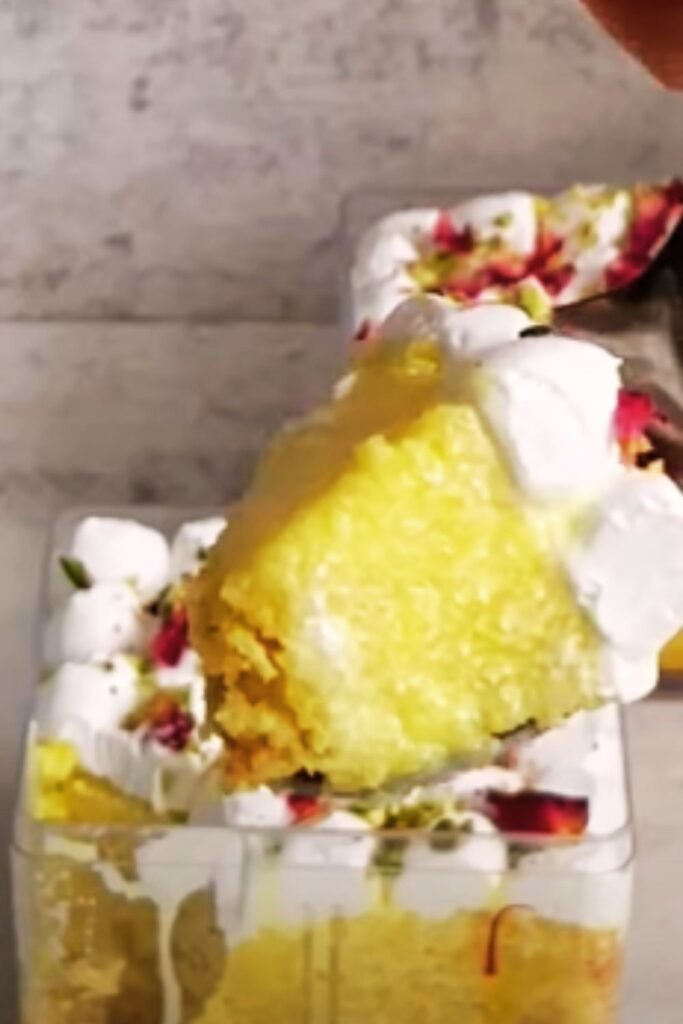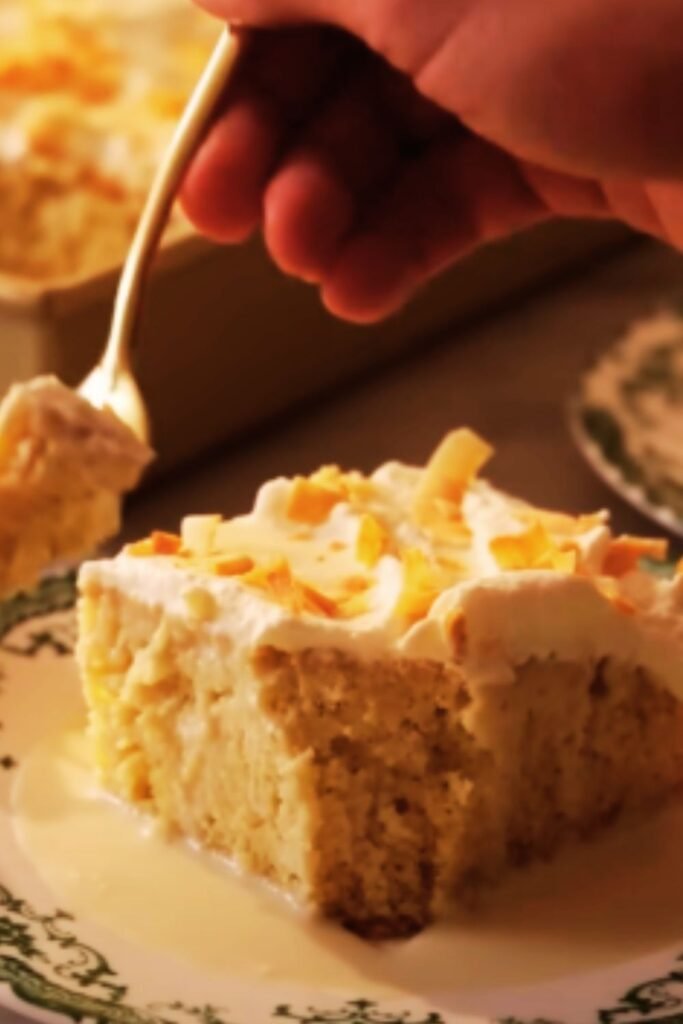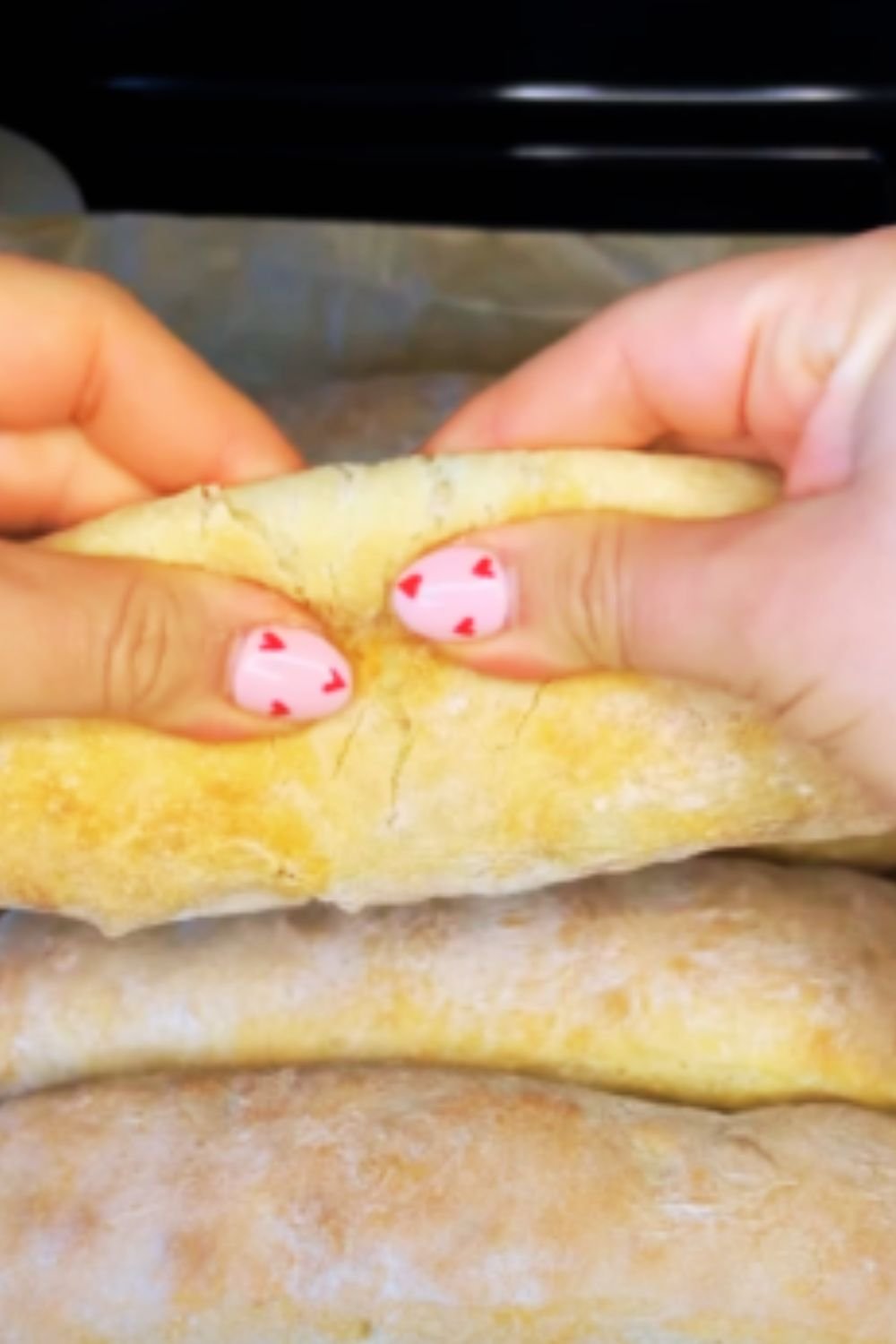There’s something magical about a dessert that manages to be incredibly moist yet light at the same time. Tres Leches cake achieves this culinary paradox beautifully, and I’m excited to share my perfected recipe with you today. After years of testing and tweaking, I’ve developed what I believe is truly the best Tres Leches cake recipe you’ll find anywhere.
What Makes Tres Leches Special?
Tres Leches, meaning “three milks” in Spanish, is a beloved dessert throughout Latin America. What sets this cake apart is the unique soaking process that transforms a simple vanilla sponge into something extraordinary. After baking, the cake is pierced all over and bathed in a sweet mixture of three different milk products: evaporated milk, condensed milk, and heavy cream. The result? A cake that’s incredibly moist but somehow doesn’t become soggy or fall apart.
I first encountered this wonderful dessert during a trip to Mexico years ago, and I’ve been obsessed with perfecting my recipe ever since. The version I’m sharing today combines traditional techniques with a few special touches that elevate it above the ordinary.
The History Behind the Magic
Before diving into the recipe, let’s take a moment to appreciate the rich history of this iconic dessert. While many countries claim to be the birthplace of Tres Leches cake, its origins likely trace back to 19th century Mexico. Some food historians believe it evolved from European soaked cakes brought over during the colonial period.
The cake’s popularity exploded in the 1940s when Nestlé began printing the recipe on condensed milk can labels throughout Latin America. This clever marketing strategy helped spread the dessert throughout Mexico, Central America, the Caribbean, and eventually to the United States.
What I love most about Tres Leches is how each region puts its own spin on the basic recipe. In some areas, you’ll find it topped with meringue instead of whipped cream, while others add a splash of rum to the milk mixture or incorporate tropical fruits.
Key Ingredients for Success
The beauty of Tres Leches cake lies in its simplicity. You don’t need exotic ingredients or advanced baking equipment to create something spectacular. Here’s what you’ll need:
For the Cake:
- All-purpose flour (2 cups)
- Baking powder (1 tablespoon)
- Salt (1/2 teaspoon)
- Unsalted butter, room temperature (1/2 cup)
- Granulated sugar (1 cup)
- Pure vanilla extract (2 teaspoons)
- Large eggs, room temperature (5, separated)
- Whole milk (1/2 cup)
For the Three-Milk Soak:
- Sweetened condensed milk (1 can, 14 ounces)
- Evaporated milk (1 can, 12 ounces)
- Heavy cream (1 cup)
- Ground cinnamon (1/2 teaspoon)
- Pure vanilla extract (1 teaspoon)
For the Topping:
- Heavy cream (2 cups)
- Granulated sugar (3 tablespoons)
- Pure vanilla extract (1 teaspoon)
- Fresh berries for garnish (optional)
- Ground cinnamon for dusting (optional)
The Secret to Perfect Texture
The distinguishing feature of a truly exceptional Tres Leches cake is its texture. After years of experimentation, I’ve discovered several crucial techniques:
- Separate the eggs: By whipping the egg whites separately and folding them into the batter, you create a sponge cake with the perfect structure to absorb the milk mixture without collapsing.
- Don’t overmix: Once you add the flour, mix just until combined. Overmixing develops gluten, which can make your cake tough rather than tender.
- Cool completely before soaking: Patience is key! Allow your cake to cool entirely before adding the milk mixture. This prevents the hot cake from “cooking” the milk and ensures even absorption.
- Gradual soaking: Pour the milk mixture slowly, allowing it to absorb between additions. This prevents pooling and ensures every part of the cake gets properly soaked.
- Overnight refrigeration: While it’s tempting to dig in right away, allowing your Tres Leches to rest overnight in the refrigerator lets the flavors meld and the texture perfect itself.
Step-by-Step Instructions
Let’s break down the process into manageable steps:
Preparing the Cake
- Preheat your oven to 350°F (175°C). Grease a 9×13-inch baking dish.
- In a medium bowl, whisk together the flour, baking powder, and salt.
- In a large bowl, beat the butter and 3/4 cup of sugar until light and fluffy, about 3 minutes.
- Add the egg yolks one at a time, beating well after each addition. Mix in the vanilla.
- Gradually add the flour mixture to the butter mixture, alternating with the milk, beginning and ending with the flour. Mix just until combined.
- In a separate bowl, beat the egg whites until soft peaks form. Gradually add the remaining 1/4 cup sugar and continue beating until stiff peaks form.
- Gently fold the egg whites into the batter in three additions.
- Pour the batter into the prepared baking dish and smooth the top.
- Bake for 25-30 minutes, or until a toothpick inserted in the center comes out clean.
- Allow the cake to cool completely in the pan on a wire rack.

Creating the Three-Milk Soak
- In a large bowl, whisk together the condensed milk, evaporated milk, heavy cream, cinnamon, and vanilla.
- Once the cake has cooled, use a fork to poke holes all over the top of the cake. Be generous here – more holes mean better absorption!
- Slowly pour the milk mixture over the cake, working in batches and allowing it to soak in between additions.
- Cover the cake with plastic wrap and refrigerate for at least 4 hours, preferably overnight.
Making the Topping
- Just before serving, beat the heavy cream, sugar, and vanilla until stiff peaks form.
- Spread the whipped cream evenly over the top of the soaked cake.
- If desired, dust with cinnamon and garnish with fresh berries.

Troubleshooting Common Issues
Even with the best recipe, things can sometimes go wrong. Here are solutions to common Tres Leches problems:
Cake Is Too Soggy
- You may have added the milk mixture while the cake was still warm
- Try using less of the milk mixture next time (reserve about 1/2 cup)
- Make sure your cake has enough structure from properly beaten egg whites
Cake Is Too Dry
- Not enough milk mixture was absorbed
- Try poking more holes in the cake
- Allow more time for the cake to soak
- Make sure to cover while refrigerating to prevent moisture loss
Whipped Cream Is Runny
- Cream wasn’t cold enough before whipping
- Bowl and beaters weren’t chilled
- Cream was overbeaten (it can break down if whipped too long)
- Try adding a stabilizer like a teaspoon of cornstarch
Cake Collapsed After Soaking
- Egg whites weren’t beaten to stiff peaks
- Batter was overmixed after adding flour
- Cake was underbaked
Nutritional Information
For those keeping track of dietary information, here’s a breakdown per serving (assuming 12 servings per cake):
| Nutrient | Amount per Serving |
|---|---|
| Calories | 420 |
| Total Fat | 22g |
| Saturated Fat | 13g |
| Cholesterol | 145mg |
| Sodium | 210mg |
| Total Carbohydrates | 52g |
| Dietary Fiber | 0g |
| Sugars | 42g |
| Protein | 8g |
| Calcium | 20% DV |
| Vitamin D | 10% DV |
Flavor Variations to Try
While the classic Tres Leches is hard to improve upon, here are some delicious variations I’ve developed over the years:
Coconut Tres Leches
Replace 1 cup of the heavy cream in the milk mixture with coconut cream and add 1/2 teaspoon of coconut extract. Garnish the finished cake with toasted coconut flakes.
Horchata Tres Leches
Add 1 teaspoon of ground cinnamon and 1/4 teaspoon of ground nutmeg to the cake batter. Replace 1/2 cup of the milk mixture with horchata.
Dulce de Leche Tres Leches
Drizzle 1/2 cup of dulce de leche over the top of the cake before adding the whipped cream layer. Swirl additional dulce de leche into the whipped cream for a marbled effect.
Fruity Tres Leches
Add a layer of sliced strawberries, peaches, or mangoes between the soaked cake and the whipped cream topping.
Mocha Tres Leches
Add 2 tablespoons of instant espresso powder to the cake batter and replace 1/4 cup of the milk mixture with coffee liqueur (optional).

Serving Suggestions
Tres Leches cake is perfect on its own, but I love to enhance the experience with these serving ideas:
- Pair with fresh fruit: Berries, mango, or peach slices add a bright, acidic contrast to the cake’s sweetness.
- Add a sauce: A drizzle of dulce de leche, caramel sauce, or chocolate sauce takes this dessert to a new level.
- Serve with coffee: The bitterness of a good cup of coffee perfectly balances the cake’s sweetness. I particularly enjoy it with a cinnamon-spiced coffee.
- Make it festive: For special occasions, add a splash of color with edible flowers or colored sugar.
- Individual portions: For elegant presentations, cut the cake and plate individual servings with a berry coulis and mint leaves.
Storage and Make-Ahead Tips
One of the wonderful things about Tres Leches cake is that it actually improves with time as the flavors meld. Here’s how to make the most of that:
- Refrigeration: Tres Leches cake must be refrigerated and will keep well for up to 5 days. Keep it covered to prevent it from absorbing other flavors from the refrigerator.
- Make-ahead options: You can bake the cake up to 2 days before serving. Keep it unsoaked until the day before you plan to serve it. The whipped cream topping is best added within a few hours of serving.
- Freezing: While not ideal, you can freeze the unsoaked cake for up to 1 month. Thaw completely before soaking with the milk mixture.
Tres Leches Around the World
It’s fascinating to see how this beloved dessert varies across different countries:
| Country | Common Variation |
|---|---|
| Mexico | Often includes a sprinkle of cinnamon and sometimes rum in the milk mixture |
| Nicaragua | Typically includes a bit of rum and is often considered the country of origin by Nicaraguans |
| Cuba | Sometimes topped with a meringue instead of whipped cream |
| Puerto Rico | Often includes a layer of fruit, particularly pineapple or guava |
| Venezuela | Frequently includes a layer of dulce de leche between the cake and topping |
| United States | Often adapted with strawberries and sometimes chocolate variations |
Why This Recipe Works
After years of testing, I’ve found that this particular ratio of ingredients creates the perfect balance. The cake is sturdy enough to hold the milk mixture without falling apart, yet tender enough to melt in your mouth. The egg separation technique creates the ideal structure, while the overnight soak allows the flavors to develop fully.
Most importantly, I’ve carefully calibrated the sweetness. Many recipes go overboard with sugar, but this version lets the natural sweetness of the milk mixture shine through without becoming cloying.
Q&A Section
Q: Can I make Tres Leches cake ahead of time for a party?
Absolutely! In fact, I recommend it. Make the cake and soak it with the milk mixture the day before your event. Add the whipped cream topping a few hours before serving. This gives the cake time to fully absorb the milk mixture and develop its flavor.
Q: I’m lactose intolerant. Can I still enjoy Tres Leches cake?
While traditional Tres Leches cake is definitely dairy-heavy, you can make a lactose-friendly version using lactose-free milk products. Lactose-free evaporated milk, condensed milk, and heavy cream are now available in many supermarkets. The texture and flavor will be very similar to the original.
Q: My cake seems to be floating in excess milk mixture. Did I do something wrong?
Not necessarily! Some cakes absorb liquid more slowly than others. If you notice excess milk mixture in the pan, you can carefully drain some off, or simply give the cake more time to absorb it. Covering and refrigerating overnight often solves this issue as the cake continues to absorb the liquid.
Q: Can I use a box mix instead of making the cake from scratch?
While purists might disagree, you can use a white or vanilla box cake mix as a shortcut. Choose a light, sponge-type cake mix rather than a denser “butter cake” variety. Just be aware that homemade cakes typically have a better structure for absorbing the milk mixture without becoming soggy.
Q: How do I know when my cake has absorbed enough of the milk mixture?
The cake should absorb most of the milk mixture, though a small amount remaining in the bottom of the pan is normal. When you press gently on the cake, it should feel moist and heavy but not soggy. If you insert a toothpick, it should come out wet but not dripping.
Q: Can Tres Leches cake be made gluten-free?
Yes! I’ve had excellent results using a cup-for-cup gluten-free flour blend in place of all-purpose flour. The key is finding a good quality blend that contains xanthan gum to help with structure. Since Tres Leches cake is meant to be moist, it’s very forgiving when made with gluten-free flour.
Q: My whipped cream topping deflated and got runny. What went wrong?
Whipped cream can deflate if it’s overbeaten or if your kitchen is very warm. For a more stable topping, try these tips: make sure your cream, bowl, and beaters are very cold; add the sugar only after soft peaks begin to form; consider adding a stabilizer like 1 teaspoon of cornstarch or unflavored gelatin bloomed in 1 tablespoon of water.
Q: Is there a way to make this cake less sweet?
Yes! You can reduce the sugar in the cake itself by up to 1/4 cup without affecting the texture. For the milk mixture, try replacing up to half of the sweetened condensed milk with more evaporated milk. This maintains the creamy texture while reducing sweetness.
Final Thoughts
Tres Leches cake is one of those special desserts that brings people together. It’s impressive enough for special occasions yet comforting enough for family dinners. What I love most about this recipe is how it balances simplicity and sophistication – it doesn’t require advanced baking skills, yet it delivers a result that will have everyone asking for your secret.
Remember that patience is key with this dessert. Give it time to soak, preferably overnight, and you’ll be rewarded with a truly exceptional treat. I hope you enjoy making and sharing this cake as much as I do. It’s truly a slice of Latin American heaven!


